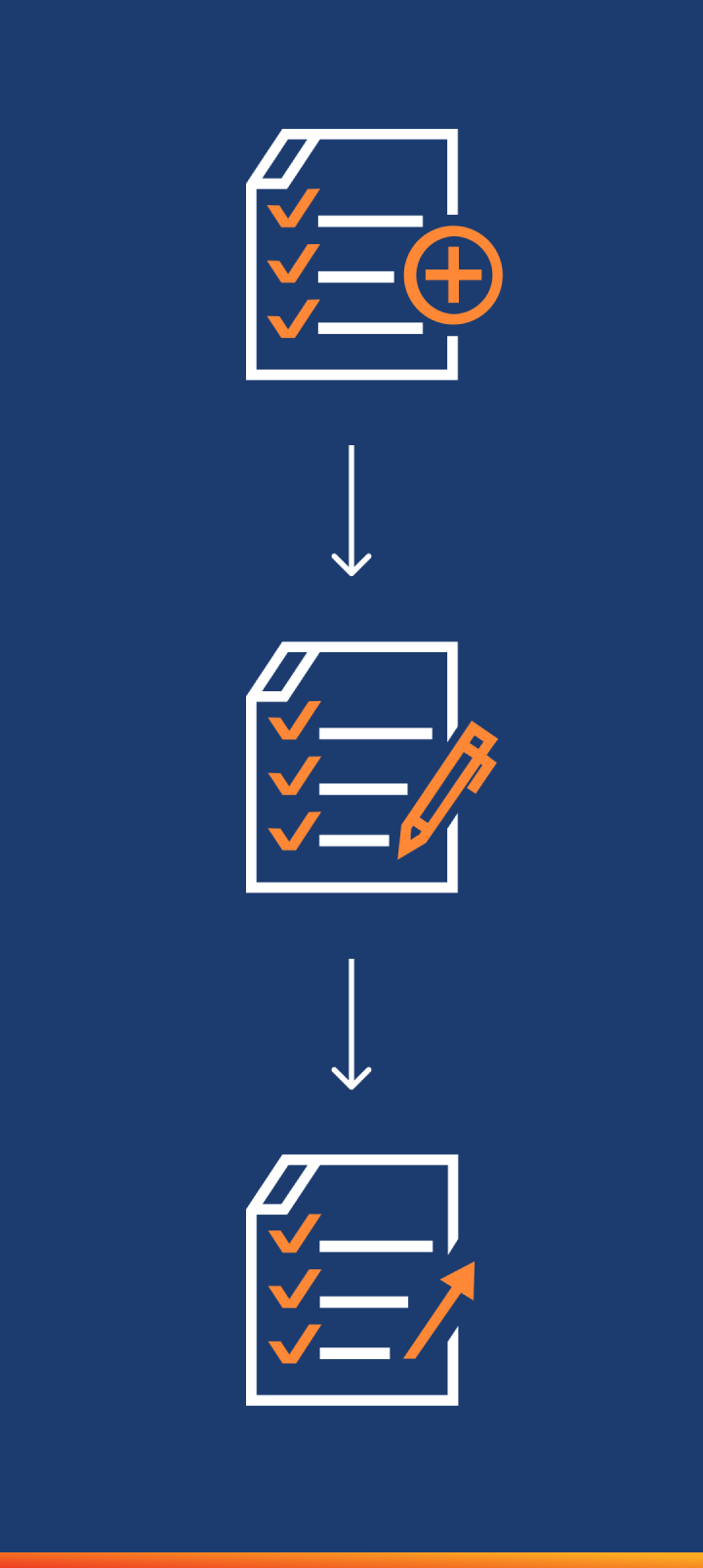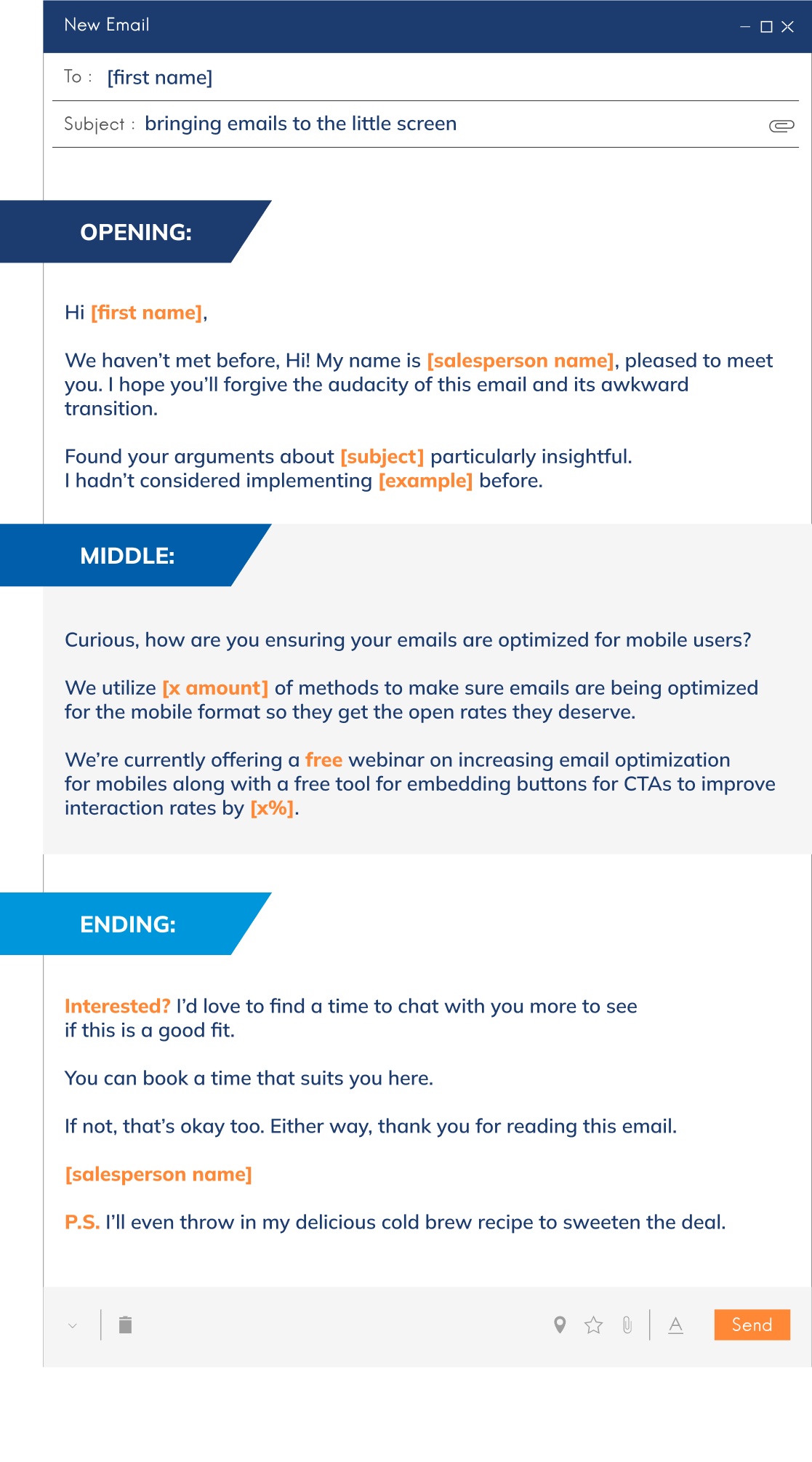Definitive Guide to B2B Email Marketing
What is Email Marketing?
B2B lead generation email marketing is the process of sending email campaigns to businesses, and the decision makers or professionals within that could become beneficial connections.
Email marketing can be an efficient vehicle for delivering personalised messaging and content that can establish long-lasting relationships with clients and nurture leads throughout the buying process.
For marketers to take full advantage of email marketing, it is imperative to first develop a detailed strategy to plan and guide email creation and tactics. Blanket emails that target all accounts with the same approach are likely to fail as prospective clients come to expect more personalised approaches and messaging.
This personalisation relies on a deep understanding of target segments. As such, an integral element of email marketing is collecting data from previous campaigns and additional sources to make adaptations to strategies and optimise emails for specific target groups.
7 Ways to Get the Best Results From
a Successful Email Marketing Strategy
Developing an efficient email marketing strategy can often be a complicated process. Below are some in-detail steps that break down the basics of email marketing and help ensure emails yield high engagement rates and the desired results.
1. List Building and List Segmentation




Each type of marketing segmentation focuses on different variables, from company information to individual personalities (including social media), and the correlations that can be drawn between them.
Combining multiple market segmentation approaches can be particularly successful as they allow for the creation of customer profiles by measuring behavior past and present to deeply analyse leads. This allows for lists to be accurately segmented into key segments that can guide the personalisation of email marketing campaigns.
Market segmentation is key to building a detailed understanding of target audiences within a broader market and lending direction to campaigns.
NOT SURE WHERE TO START?
READ OUR DEFINITIVE GUIDE TO B2B MARKET SEGMENTATION
Opening:
The opening of an email is responsible for first impressions. As such, the opening should be carefully formulated to avoid emails being disregarded. To capture interest, subject lines should be kept short and no more than 5 words if possible (and under 70 characters) to pique the interest of the reader.
Emails should open with a humble introduction that, if possible, references earlier touch points. In the case of a first email being sent to a prospect without a prior formal introduction, address the elephant in the room. Leading with honesty encourages the reader to continue.
This should be followed with a comment or compliment that demonstrates knowledge and interest in the prospect individually and their company. By feeling understood, the reader will be motivated to read further.
Middle:
Next, get to the point of the email to avoid losing the reader’s interest. Ask the prospect a rhetorical question that illuminates a current or potential future problem. This leads nicely into answering the question with a proposed solution or product that your company offers.
A well-formulated question is key to email marketing lead generation, as it demonstrates knowledge of the prospect, their needs, and the goals of the company they work for. This also reinforces the expertise of the sender, therefore solidifying the credibility of an offer.
Offer an educational opportunity in the form of relevant content, rather than pushing for a sale. Any content shared should serve to inform, engage, and nurture a stronger relationship with the prospect. Make sure it is targeted to the prospect’s pain points or needs.
Making this offer allows sales teams to analyse interaction to re-confirm lead interest, improve segmentation accuracy, and help to identify future opportunities with prospective clients who are interested but unable to make a change currently. Giving power back to the prospect at this stage makes them feel less forced into a sale and makes interest on the salesperson’s part more genuine.
Ending:
At the end of the email, include a CTA to encourage interaction. This may be a prompt to download a resource (such case studies), if it has been offered, or to book a meeting.
The latter should be done in a low-friction, non-demanding manner. Asking too much of prospects at this stage is a common mistake that can result in them dismissing emails entirely.
Subvert expectations at the end of the email by making it clear to the reader that there is no pressure to make commitments. It is important to provide something of use before making a request to avoid creating a transactional email.
Finally, a memorable sign-off can go a long way to improve engagement rates.
Strategising email marketing is a key element of lead generation campaigns. JUST GETTING STARTED?
READ A FULL BREAKDOWN OF BEST PRACTICES, TACTICS,
AND TECHNIQUES IN OUR DEFINITIVE GUIDE TO LEAD GENERATION
B2B Email Marketing Example: A “Day One” Email


7 Additional tips to make emails stand out from the crowd:
1. Use humor and a conversational tone:
Email marketing can at times be uncomfortable, particularly with first-time contacts. Much in the same way that many B2B companies utilise humor in social media marketing, adopting a conversational tone, when implemented correctly, can diffuse the awkwardness of cold emails. Injecting personality that will help them stand out in a crowded inbox.
2. Avoid assumptions:
Whilst data and insights from previous campaigns are important, it is essential to avoid making assumptions about prospects. Conveying genuine interest in emails makes sure that prospects feel unique and avoids marketers making critical mistakes.
3. Focus on the reader:
Demonstrate that the needs of a prospect are your priority by removing “I” and referring to the reader (“you”) as much as possible. Reducing the emphasis on the salesperson and their needs makes the prospect feel important and less pressured into making a commitment.
4. Email length:
Keep the length of emails concise. This avoids prospects dismissing lengthy emails and makes them more mobile-friendly. The ideal length of an email should depend on the recipient, however, emails between 50 and 150 words have been proven to have higher response rates.
5. Leverage language:
One way that B2B email marketing strategies can be informed by previous campaigns is by applying language used by prospects in emails. Addressing common problems using familiar vernacular improves relatability and implies a thorough understanding of the prospect’s issues. Social media can be a great source for this.
6. Address the negatives:
Diffuse negatives by addressing them openly rather than ignoring them. Honesty encourages prospects to respond more positively to emails.
7. Be open-minded:
For one reason or another, emails are often dismissed. Therefore, sales teams should aim to approach email marketing with an open mind and without high expectations. This mindset often results in higher-quality emails that motivate leads rather than push them to make a purchase before they are ready.
3. How to Include CTAs in Emails: 5 Tips
1. Align CTAs with email goals:
It is crucial to make sure that each call to action is aligned with the goal of the email. This keeps the messaging clearer for the reader and also gives each email a function as part of a cadence or campaign.
2. Be specific:
CTAs should include specific information about the timing and length of a possible meeting. Prospects appreciate honesty and a straightforward approach to arranging meetings.
3. Frame CTAs as a question:
Structuring CTAs as a rhetorical yes/no question highlights the benefits prospects stand to receive whilst confirming their interest for a second time. Asking for permission to share a resource or continue informing a prospect on a topic of interest helps to boost interactions with CTAs.
4. Give the option to opt-out:
Remove the pressure to commit to a meeting. This helps to keep the email genuine and counter email dismissal. Reminding prospects of this option reinforces the prioritisation of their needs and makes them feel valued.
5. Use humor:
Humor can be a useful tool for subverting expectations and diffusing the awkwardness that can come from a call to action. It also maintains the conversational tone and personal feel of an email, whilst reducing the pressure to make a commitment.
Email marketing can be an efficient tool for reaching whole target market segments, however, designing email campaigns for individual accounts often requires greater planning.
NOT SURE WHERE TO START?
READ OUR DEFINITIVE GUIDE TO ACCOUNT BASED MARKETING
TO KICKSTART YOUR CAMPAIGN DEVELOPMENT
Email length: Emails should be between 50-150 words long for optimal response rates (50%+).
Optimize images: The number of images included should be limited both in quantity and file size to reduce load times.
Utilise responsive templates: These adapt emails to fit the screen of any phone or desktop monitor via device detection, which identifies the phone model to apply the appropriate adjustments. Templates can also be modified to prioritise features such as CTAs if deemed necessary.
Break up text: Smaller displays are easier to crowd and a busier screen may result in a lead being dissuaded from reading further.
Feature buttons: Buttons are another way of breaking up and reducing the amount of text in general. As such, buttons are often more successful for encouraging interactions with CTAs, rather than links in text form.
By following these steps to optimise B2B email marketing for the mobile format, marketers can expect to yield greater results from their email campaigns and take full advantage of the popularity of mobile.
5. B2B Email Marketing Automation
How does automation work?
Benefits of email marketing automation
There are multiple benefits from using market automation tools for elements of an email marketing campaign, including:
Streamline marketing workloads: Marketing automation helps to increase efficiency by coordinating outreach. This saves time, resources, and helps marketers to prioritize important and time-consuming projects. Marketing resources can also be made more effective through automation as replies from leads can be monitored and used to create automated email responses to boost the reach of appropriate content.
Boosted ROI: Time saved through email marketing automation can be reinvested into delivering customised campaigns that reach out at the right frequency with the right content. This helps create a one-to-one connection with leads and encourages them through the buying process, boosting sales cycles and the overall ROI of email marketing strategies.
Align sales and marketing: When implemented correctly, automation can result in email marketing lead generation of qualified leads for sales teams. As these leads require nurturing, automation is another opportunity for the alignment of sales and marketing goals. In doing so, both teams can take insights gained from automation to ensure that leads are receiving the proper nurturing with content and in a timely manner.
Create automated drip email campaigns: Processes that are the same for each lead are key candidates for automation as they require less personalisation. When appropriate, automate welcome/confirmation emails as well as emails to promote an event/activity/offer to streamline drip campaigns.
When to automate emails
Although marketing automation tools can be an incredibly useful tool for email marketing campaigns, it is not always the best approach. In order to establish a stronger connection with leads that has the potential to become a fruitful relationship, it is essential for email marketing to make leads feel unique. This makes them feel that their business is important and a priority for the company trying to win it.
As such, when applying automation to B2B email marketing blueprints keep some touchpoints unautomated. For example, initial emails, emails to regain interest, or emails ending communication with a prospect should have personalisation.
6. Analytics
It is crucial to pay attention to and measure key metrics that can inform improvements and maintain email quality. Below are five important email marketing benchmarks that can be used to guide email marketing campaigns and the creation of future strategies.
Open rates: Measuring the open rates of emails can be a useful indicator for evaluating emails and their subject lines. According to The Data & Marketing Association, the average email open rate was at 15.1% for 2018. Open rates are a great email marketing benchmark for testing how each individual email performs during a campaign and identifying successful strategies.
Click-through rates (CTRs): Higher CTRs mean that more prospects are clicking on links or buttons embedded in emails and are viewing content or specific landing pages. As such, CTRs demonstrate how effective email content is in engaging the reader and promoting interaction.
Bounce rates: Divided into two categories (hard and soft), bounce rates can be used to inform list management and building. Hard bounce rates refer to when emails are sent to accounts that no longer exist and soft bounce rates indicate a failure to reach an inbox because it is full (when the inbox has space, the email will eventually reach its recipient). By tracking these rates, lists can regularly be scrubbed.
Unsubscribe rates: These rates tend to be fairly consistent, as even with unresponsive email lists, the unsubscribe rate is typically low. However, any changes to unsubscribe rates can highlight potential issues with email content or timing. As an email marketing benchmark and indicator of failure, unsubscribe rates indicate when changes are absolutely necessary.
Spam complaints: Similar to unsubscribe rates, spam complaints demonstrate when content and email marketing strategies have failed to engage leads in the right way. When spam complaint rates reach high levels, it is imperative to make immediate adjustments and reevaluate the structure and content of emails.
7. Timing and Lead Follow-up
These insights can be leveraged to narrow down the most appropriate time slots for each account as well as divide markets into key groupings for marketing automation. The accuracy of this information can be supported by implementing testing and tracking email marketing benchmarks. Testing helps to optimise timing and allows email marketing to be potentially adjusted mid-campaign to improve engagement rates.
The appropriate timing for email marketing will differ from prospect to prospect and the purpose of each email. As a result, investing in research and testing hypotheses to determine the correct timing for each account is essential to maximise the effect of emails and increase email marketing lead generation.
Lead follow-up
An integral part of ensuring the success of lead generation email marketing is applying effective lead follow-up strategies so that any traction with leads is fully taken advantage of and not wasted.
Email marketing focused on lead generation or increasing interaction with leads should form part of a detailed and diverse blueprint that maps out follow-up and outreach in a variety of formats over an extended period of time.
Apart from managing the timing of lead follow-up, it is important to determine optimal content strategies for each target segment. For example, reinforcing credibility with case studies can help to motivate leads.
As established in earlier sections of this guide, each segment should be treated differently. However, there are some key lead follow-up mistakes to avoid that can be applied to lead generation email marketing campaigns as well.
Most importantly, email marketing should be consistent in its timing, not drive too quickly for a conversion, and deliver personalised messaging. As such, this is another example of when marketing automation should be carefully implemented
to avoid driving away leads by not making them feel unique.
Conclusion
To ensure the success and ROI of email marketing campaigns, marketers should invest time in developing email cadences that are optimised for their target audiences, both in terms of their content and formatting. By tracking email marketing benchmarks, marketers are also able to guide adjustments to current and future campaigns to improve optimisation.
With the right strategy and content, B2B email marketing can be a powerful outbound marketing tool for both demand and lead generation.
IN SUCH A COMPETITIVE LANDSCAPE, REACHING LEADS AND NURTURING LONG-LASTING RELATIONSHIPS IS ONE OF THE BIGGEST CHALLENGES FOR B2B MARKETERS.
INFUSE’s Deep Media Nurturing combats this challenge by guiding prospects through the sales funnel with an integrated, omnichannel strategy that goes beyond the inbox.
Get in touch at [email protected] to build a strategy that targets your buyers with precision.










